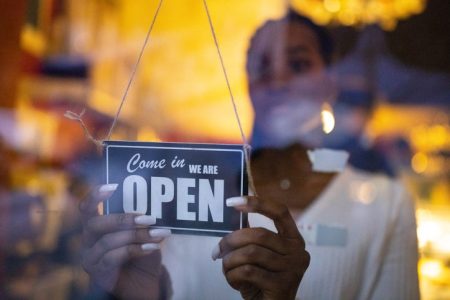Key takeaways
- A business line of credit gives companies a reusable form of credit that they can access whenever they need it
- Eligibility criteria for lines of credit can be more lenient than other types of business loans, making them an accessible form of funding
- You might consider a business line of credit if you expect to need the credit line repeatedly for current and future expenses
Business lines of credit are a popular form of financing for businesses — and for good reason. According to the 2023 Small Business Credit Survey, business lines of credit are the most popular type of funding applied for, with 43 percent of businesses vying for one.
That’s because business lines of credit offer ultimate flexibility, allowing you to use the funds for any business purchases up to the available credit limit. Plus, as you repay the loan, a revolving line of credit will replenish the available credit limit, allowing you to reuse it for funding in the future.
But while business lines of credit have a lot going for them, they may come in lower loan amounts and have other drawbacks. Consider how a business line of credit works, its pros and cons and when to consider using one to determine if this funding is the right fit for your business.
What is a business line of credit?
A business line of credit is a flexible business loan that works similarly to a business credit card. Borrowers are approved up to a certain amount and can draw on their line of credit as needed, paying interest only on the amount actively borrowed. Funds are typically accessible through a business checking account or mobile app.
Unlike a traditional or term business loan, which disburses funds in a lump sum at one time and is repaid with interest, a business line of credit is renewable. As the borrower makes repayments, the amount of credit available is refreshed, similar to payments toward a credit card limit. Business lines of credit are typically approved for several months or up to several years, depending on the lender.
How do business lines of credit work?
Business lines of credit work by providing funding up to a certain credit limit that the business can tap whenever it needs the money. The funds are repaid over a short term like 18 months with interest charged only on the amount withdrawn. As the funds are repaid, the revolving credit line replenishes, allowing the business owner to withdraw from the credit line again.
Business lines of credit have loan amounts that are generally smaller than traditional business loans, though they are often funded more swiftly. Though traditional banks may take days or weeks to fund, many online lenders can provide access to funds as quickly as within a business day.
Lines of credit may incur more fees than a business loan, which can add up to a higher borrowing cost. You’ll want to keep this in mind when considering the total cost of a business line of credit. Common fees for business lines of credit include an annual fee, an origination fee when you first apply, a maintenance or monthly fee on the account and draw fees each time you pull from the line of credit.
Secured vs. unsecured line of credit
A business line of credit is either secured or unsecured. A secured line of credit includes collateral, such as cash, investments or real estate to back the loan. The collateral shows the lender that you have assets that you can sell to repay the loan if you suddenly can’t make the regular repayments. The benefit of providing collateral is generally more favorable loan terms and a lower interest rate.
An unsecured business line of credit is a credit line that isn’t backed by collateral. To get an unsecured business line of credit, your business will need a solid financial profile (e.g., good credit score, at least two years in business, consistent or growing annual revenue). Because it raises risk for the lender, opting for unsecured business loans rather than secured generally may mean slightly higher interest rates.
You can also opt for an SBA business line of credit called SBA CAPLines. These lines of credit are available to businesses that can’t qualify for traditional lines of credit. Since these lines are backed with an SBA guarantee, lenders may be more likely to approve you since SBA lines of credit come with a reduced risk for the lender.
Bankrate insight
A business credit card has features you won’t find with a business line of credit. That may include cash back or travel rewards, employee cards, discounts on business-related purchases and the chance to avoid paying interest if you pay your balance in full each month. They’re especially useful for building business credit.
Can I get a business line of credit with bad credit?
It’s possible. Some lenders — especially online lenders — will work with business owners with a credit score as low as 500. But choosing bad credit financing means accepting certain drawbacks. Because you’re a risky proposition for the lender, they offer you less favorable terms like:
- Lower loan amounts. Lenders limit loan amounts for bad credit business loans to lessen the risk of lending to high-risk borrowers. Depending on factors like your business revenue and time in business, you may be limited to business loans for $100,000 or less.
- More frequent repayment. With bad credit, you may need to repay what you borrow more quickly, like on a weekly or biweekly basis.
- Short draw periods and repayment terms. To limit their risk, the lender may only offer you a short-term loan. That means they might only let you use the line of credit for a brief window. Additionally, they might require you to repay what you used within six to 18 months.
- Factor rates. Some lenders charge factor rates rather than interest rates to borrowers with bad credit. That can mean paying more in interest, ultimately making your line of credit more expensive.
- Fewer options. With bad credit, you’ll be presented with fewer choices. You likely won’t be able to get an unsecured business line of credit, for example.
Requirements for a business line of credit
When you’re ready to get a small business line of credit, lenders will review your application to determine eligibility. Here’s a look at some of the important factors they will consider.
- Credit score. Lenders will consider your personal and business credit score. While it’s possible to get a line of credit with a low credit score, lenders typically prefer fair-to-excellent credit, such as 600 to 670 or higher. The exact credit score requirement will vary from lender to lender.
- Annual revenue.Lenders will require that you have a minimum annual revenue. Some lenders are flexible and will consider businesses with an annual revenue of $50,000, but many prefer a revenue of at least $100,000 or higher.
- Time in business. Lenders want to see an established, profitable business. A minimum of six months to two years in business is standard.
- Collateral. If you can provide an asset to back your line of credit, you may qualify for lower interest rates with a secured line of credit.
Pros and cons of a business line of credit
Like just about anything else, getting a small business line of credit comes with some pros and cons.
Pros
- Improved cash flow: Business lines of credit can help you meet expenses while you’re waiting for all your accounts receivables to clear.
- Accessibility: Lines of credit often come with lenient eligibility requirements compared to business loans. You can also borrow in low amounts for small expenses.
- Competitive interest rates: Business lines of credit tend to keep low starting interest rates, such as 8 percent to 9 percent. You may see higher rates if you have subprime credit.
- Relationship-building with a lender: You can establish a lending relationship that you might leverage when you need more funding in the future. A lender may be more likely to approve you for future loans if you already have an established relationship with them.
- Builds business credit: You can build business credit as your on-time payments get reported to the business credit bureaus.
Cons
- Potentially high fees: Business lines of credit can come with a host of fees, moreso than business loans. You may end up paying more in fees, raising the cost of borrowing.
- Will need to manage loans effectively: Because you can borrow any amount up to the credit limit at any time, you will need to monitor your own business finances to see if you can manage a new loan. Make sure that repayments easily fit into your business budget before borrowing.
- Short repayment terms: Most lines of credit have short repayment terms, such as six to 18 months.
What to consider when getting a business line of credit
Getting a business line of credit works well when you have small to moderately-sized expenses. It also works well if you think you’ll use the line of credit again in the future. Most lines of credit are revolving, so the amount of money you can borrow replenishes as you repay previous draws.
Many business lines of credit have more lenient requirements to apply than a traditional business loan. You may still find options even with fair personal credit or low revenue.
But if you need a business loan for a specific, one-time purchase, getting a business term loan may make more sense. For example, getting an equipment loan would likely make more sense if you’re looking to purchase equipment for your business. You’ll get a lump sum upfront to purchase the equipment, and the equipment becomes collateral for the loan, potentially giving you a lower interest rate.
Can I get a startup business line of credit with bad credit?
You can get a business line of credit with bad credit. Some lenders — especially online lenders — will work with business owners with a credit score as low as 500. But choosing bad credit financing means accepting certain drawbacks. Because you’re a risky proposition for the lender, they may offer you less favorable terms, such as lower loan amounts, high interest rates or factor rates or secured lines of credit. You’ll want to compare rates and terms on multiple loan offers to find the best pne for your business.
Can I get a startup business line of credit?
Online lenders offer business lines of credit to startups, with some only requiring six months of time in business. Some lenders you can look into if you’re a startup:
| Lender | Credit limits | Minimum time in business |
| Fundible | $1,000 to $500,000 | 6 months |
| Fundbox | Up to $150,000 | 3 months |
| Backd | $10,000 to $750,000 | 1 year |
| OnDeck | $6,000 to $100,000 | 1 year |
| Wells Fargo | $5,000 to $50,000 | Under 2 years |
Bankrate insight
Even though business lines of credit are popular, they’re not the most accessible. According to the 2023 Small Business Credit Survey, only 73 percent of applicants were at least partially approved for a business line of credit. Applicants were most likely to be at least partially approved for auto or equipment loans (91 percent) and commrcial real estate loans (82 percent)
Bottom line
A small business line of credit can be an excellent and flexible solution for inconsistent cash flow in your small business. But like any form of financing, there are risks to consider. Comparing lenders to find a competitive rate and terms can save money over time.
While credit limits may be lower than what you could get with a small business loan, borrowers can return to the well repeatedly without needing to reapply for funding.
Frequently asked questions
-
You may need a personal credit score of at least 600 for a business line of credit, usually higher if you’re applying with a bank or credit union. And while it’s possible to find a lender that offers a business line of credit to a business owner with bad credit, most lenders will require you to have at least fair credit.
-
Business loans are disbursed in one lump sum and repaid by the borrower with interest over time. A business line of credit is approved up to a certain amount, and business owners can repeatedly borrow, using and repaying credit as needed. Business loans may have more favorable interest rates and longer repayment terms compared to a business line of credit.
-
Banks, credit unions and alternative lenders may offer business lines of credit.
-
While some lenders may approve you using your Employer Identification Number (EIN) number alone, many will also require your Social Security Number and personal credit report to determine creditworthiness. Many lenders will want a guarantee that you will be personally responsible for any debt you incur in the event your account goes into default.
Read the full article here












